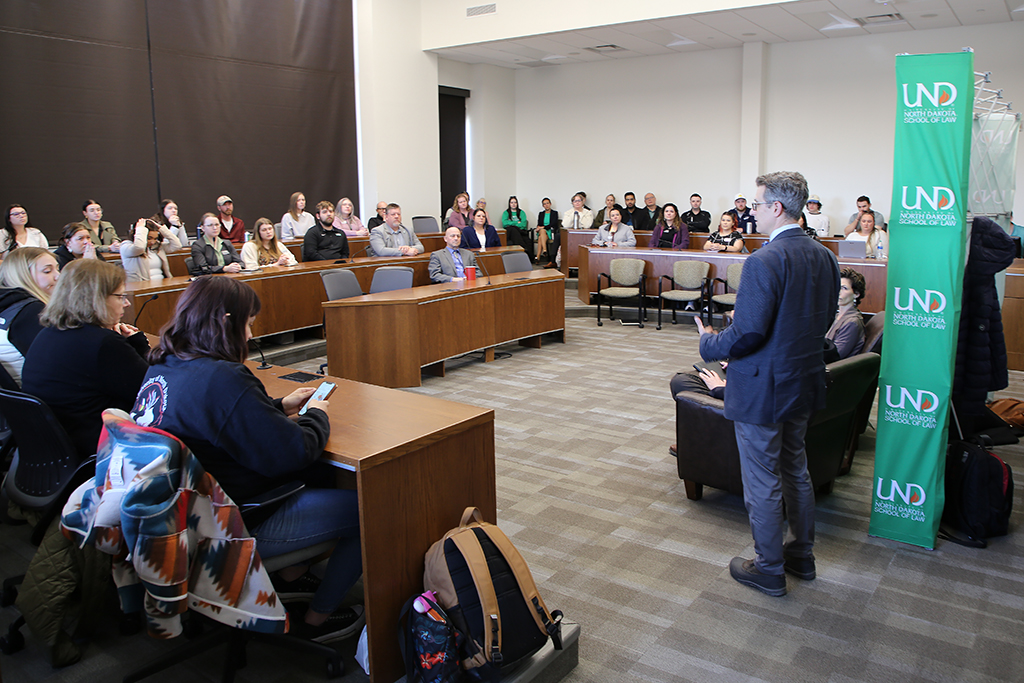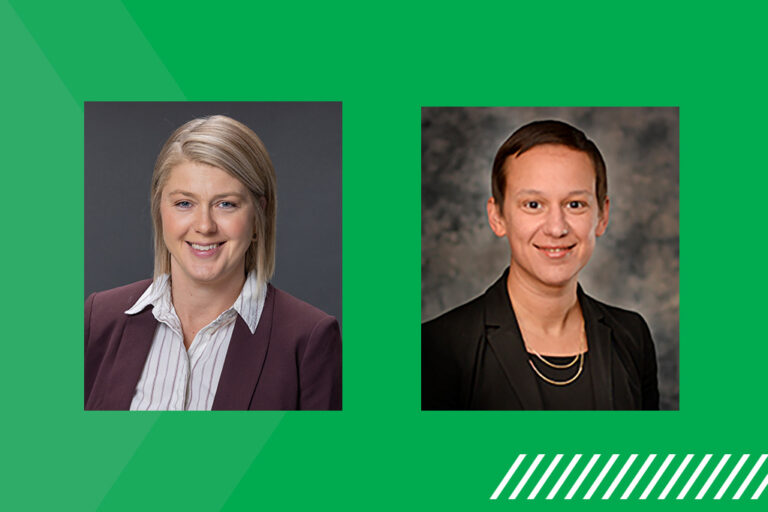At UND Law, ‘A Conversation about Wrongs, Rights and Repatriation’
Expert panelists visit UND to discuss repatriation and federal law
On Tuesday, April 11, dozens of UND students, faculty and staff members packed a third-floor lecture bowl in the School of Law to gain a better understanding of repatriation, a process deeply affecting UND.
It’s been more than a year since Indigenous remains were discovered on the UND campus. That discovery set in motion a massive campus-wide undertaking to search for, gather, identify and ultimately return those remains, as well as other Indigenous artifacts, back to the tribes from which they descend.
That process, called repatriation, is governed by the Native American Graves Protection and Repatriation Act of 1990, or NAGPRA. Repatriation is an extensive process. Teams have been combing UND buildings for ancestors and sacred artifacts, and what has been found has been relocated to a secure location. There, they will be identified by workers from Dirt Divers, a cultural resource management firm that helps organizations with repatriation and NAGPRA compliance.
But was does repatriation mean? What does NAGPRA cover? Have repatriation efforts been successful elsewhere?
Moderating Tuesday’s discussion — which searched for answers to those and other questions — was Dan Lewerenz, a member of the Iowa Tribe of Kansas and Nebraska and a UND assistant professor of law. Joining him were Shannon O’Loughlin, a Choctaw tribal member and CEO of the Association on American Indian Affairs, and Mary Hudetz, a Crow tribal member, investigative reporter for ProPublica and former president of the Native American Journalists Association.
The event was titled, “It Belongs to Them, Let’s Give It Back: A Conversation about Wrongs, Rights, and Repatriation.”
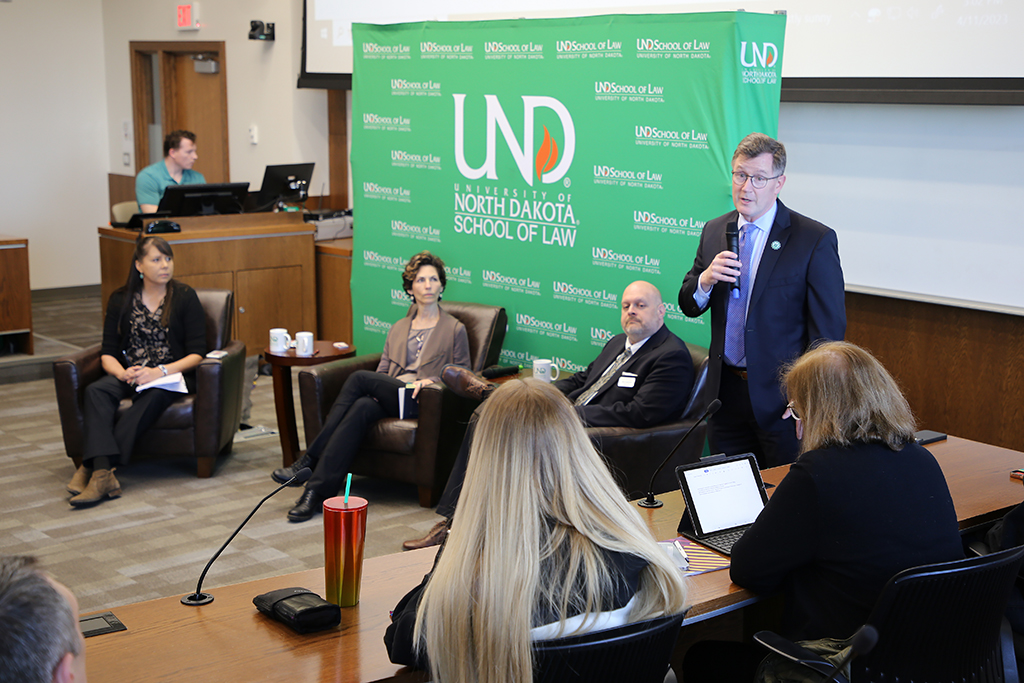
UND President Andrew Armacost welcomed the panelists, and said he was thrilled so many attended the event, which also was broadcast online. He noted the ongoing repatriation work on campus, but pointed to the “bigger picture” nature of the conversation about to take place.
“Today’s discussion is not about the particular case of the University of North Dakota, but rather to give all of you a good understanding of what NAGPRA entails, and the important sacred and moral responsibility all universities and museums have to make sure that we comply with what NAGPRA asks us to do — in particular, returning sacred items and ancestors back to their lands,” he said.
Lewerenz, who also sits on the University’s Repatriation Committee, said the conversation might be the first time for some people to become familiar with repatriation and the federal law that governs it. He first asked for a definition of the term.
O’Loughlin said repatriation is frequently used to mean the returning of deceased soldiers’ bodies from foreign soil. Indigenous advocates began using the term to discuss returning the bodies of their ancestors to their homelands. The term covers human remains, and also sacred objects and funerary items.
“It’s about returning the things that have been taken out of our culture, the things that make us who we are as Natives,” O’Loughlin said.
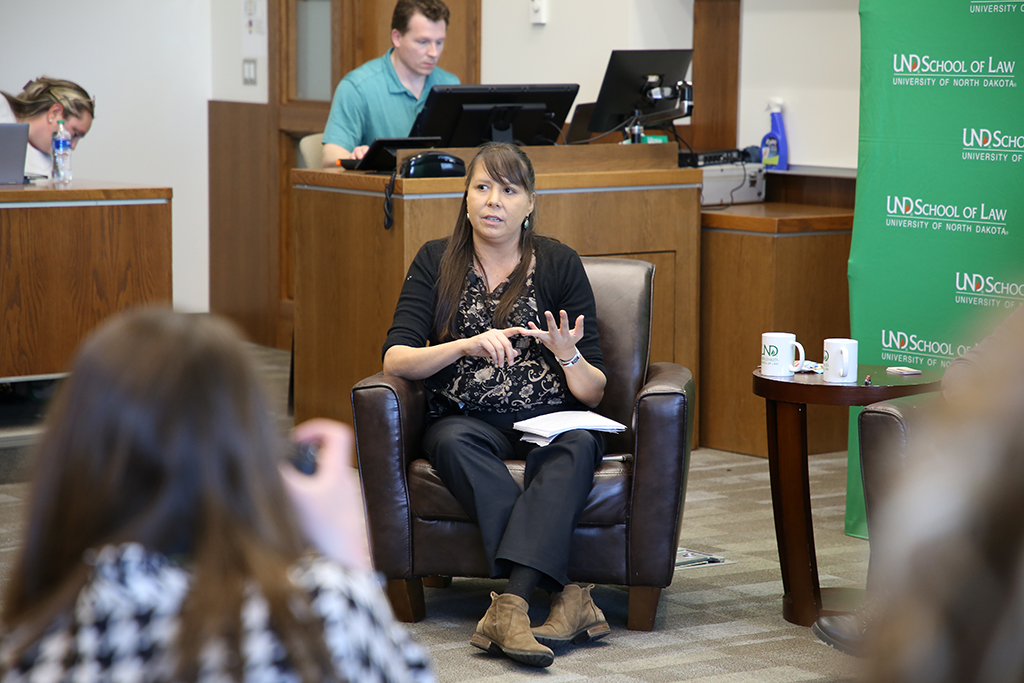
Hudetz agreed. The law requires institutions to begin returning ancestors and other items back to the tribes, she said. Some universities amassed large collections in order to show they were elite research institutions, while other entities got involved in the name of American expansion — the Tennessee Valley Authority electric utility, for example, excavated graves to extend its electrical infrastructure.
The law requires institutions that receive federal funding create an “inventory” (the word is used in the law) of ancestral remains and other objects, then report that inventory to the U.S. National Park Service, the agency that oversees NAGRA compliance, Hudetz explaned. She said the law is essentially a human rights law, created because of the efforts of those who wanted to bring their ancestors home.
“It came about because of the advocacy of Native people over decades,” she said.
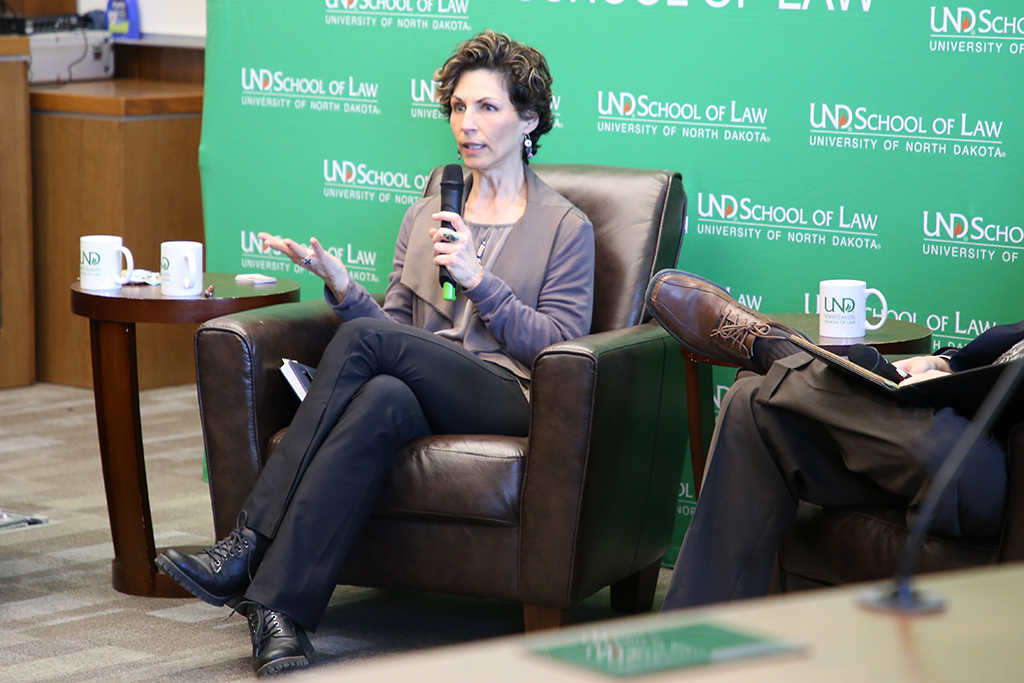
O’Loughlin added that the law actually applies to “museums,” then goes on to identify any institution that holds Native remains or objects as a museum, universities included. When creating the inventories, those “museums” must pay special attention to human remains and associated funerary objects and categorize them together.
Importantly, O’Loughlin said, the process to determine if an item is eligible for repatriation is not a scientific one, but one based on if a “reasonable determination” shows a relationship between an ancestor and a present-day tribe.
“So simply finding geography, bringing in tribes that are connected to that geography, consulting with those tribes, affiliating and repatriating is the easiest thing to do, and what the law provides for,” she said.
Like Hudetz, O’Loughlin said the law was generated from Native advocates who implored Congress to take action. The advocates did this by organizing field trips to places such as the American Museum of Natural History in New York. There, lawmakers saw hundreds, if not thousands of ancestral skeletal remains that had been stripped of their funerary belongings and disarticulated. In other words, each bone had been placed in a container with other similar bones — skulls with skulls, femurs with femurs, etc.
According to Hudetz, nearly 600 tribes have had remains made available to them. But 609 institutions report having Native American remains, and more than 110,000 of those remains (or 52% of the total declared amount) have yet to be made available to tribes.
Hudetz’s publication ProPublica has created an interactive map so people can see if there are any nearby institutions in possession of ancestral remains. Interestingly, Grand Forks, N.D., is not listed, likely because UND is still in the process of compiling its inventory and has not yet reported that inventory to the federal government.
Both Hudetz and O’Loughlin said repatriation is not an impossible task, with a few hundred institutions having reported that they have completely repatriated their inventories. Still, O’Loughlin said there are several smaller entities — local historical societies, for example — that may be in possession of items that legally require repatriation.
“We really don’t know what the numbers are,” O’Loughlin said. “We really don’t know what else is out there.”
